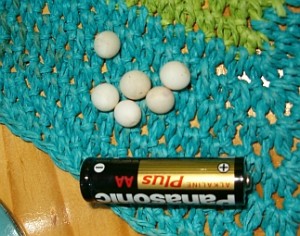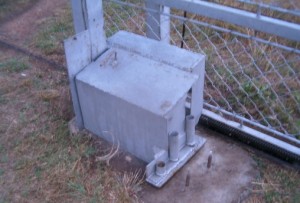After our late night last night, we slept in til almost 8 am this morning. For the past several days the hot water for our shower has been gradually getting colder each day, and Virginia got a chuckle from Lorraine when she told her that our shower no longer had therapeutic value. After borrowing a ladder and meter, and donning my trusty LED headlamp, I climbed into the attic to get to the water heater. Upon opening the cover for the heating element and thermostat, seven lizard eggs fell out. This is Africa! Quickly assessing that the eggs were not the problem, attention began to focus on some slightly overheated wires on the thermostat which proved intermittent. Being Saturday with most shops closing at 1 pm, a quick 4 mile drive was made into Manzini with Lorraine’s car. My first time to drive on the left side of the road since 1999 went without incident! After the initial shock of paying E105for a new thermostat, I determined with the latest exchange rate the actual cost was only about $11. The water heater was quickly repaired and therapeutic value restored!
While I worked on the water heater, Virginia did our laundry and hung it on the line to dry. Drying did not take long in this warm, dry climate with a little breeze.
One of the church ladies from further down our dirt road picked Virginia up for the ladies meeting this afternoon where she met many more women that she had not seen for 9 or maybe 19 years. While she was away, I walked around the TWR property known as “Signing Pines” because of sound made the very tall pine trees in the wind. I took lots of photos of flowers and plants that are not common in Indiana.
We had been invited out to the transmitter site for supper with the work group and the Stavropouloses. I had moved Lorraine’s car out of the garage, closed up the house and set the alarm system. When I went to the bungalow to wait for Virginia, I began to feel very light headed and lay down on the bed. By the time Virginia arrived, it was obvious that we would not be going to the site as I was too dizzy to even stand up. After a couple of quick trips to the bathroom, I began to feel a little better but was still unsteady. Climbed into bed about 6pm and fell asleep. Upon getting up briefly about 11 pm, I was still a bit wobbly, but by morning I felt almost normal.
What caused this? We are speculating that it was not some exotic African bug, but granola that I had eaten for breakfast. Granola had been one of my favorite breakfast foods but many years in the past it began to cause heartburn. Figuring that a Tums tablet would take care of any discomfort, it was not realized that my reaction to it seems to have risen to a whole new level after years of not eating any!



